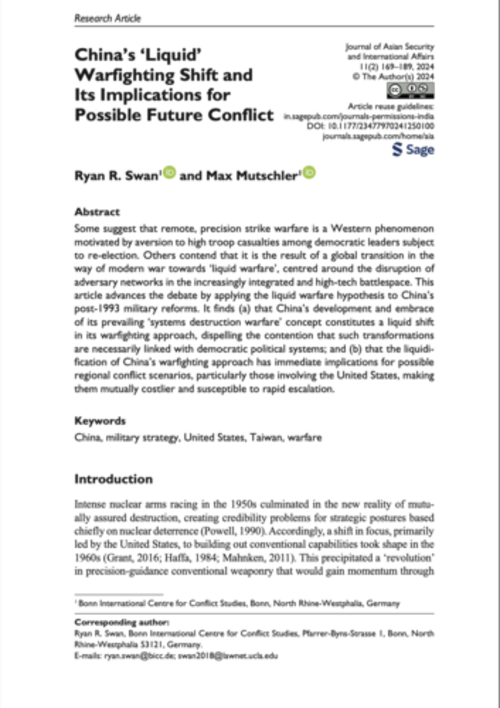Publications
China’s ‘Liquid’ Warfighting Shift and Its Implications for Possible Future Conflict
Release Date
2024-06
Language
- English
Topics
- Agents and Patterns of Security and War
Some suggest that remote, precision strike warfare is a Western phenomenon motivated by aversion to high troop casualties among democratic leaders subject to re-election. Others contend that it is the result of a global transition in the way of modern war towards ‘liquid warfare’, centred around the disruption of adversary networks in the increasingly integrated and high-tech battlespace. This article advances the debate by applying the liquid warfare hypothesis to China’s post-1993 military reforms. It finds (a) that China’s development and embrace of its prevailing ‘systems destruction warfare’ concept constitutes a liquid shift in its warfighting approach, dispelling the contention that such transformations are necessarily linked with democratic political systems; and (b) that the liquidification of China’s warfighting approach has immediate implications for possible regional conflict scenarios, particularly those involving the United States, making them mutually costlier and susceptible to rapid escalation
PDF-Download

Cite as
Document-Type
Journal article
Publisher
Sage Publications, Ltd.
Place
London
Is part of / In:



